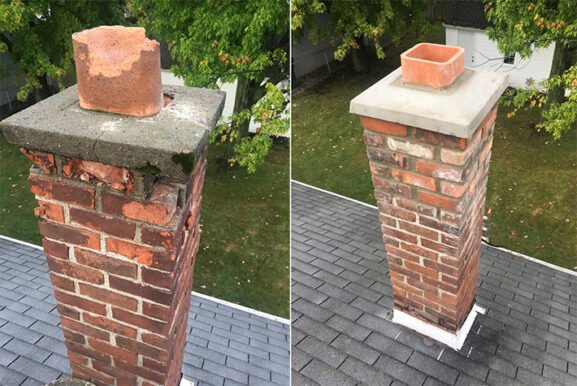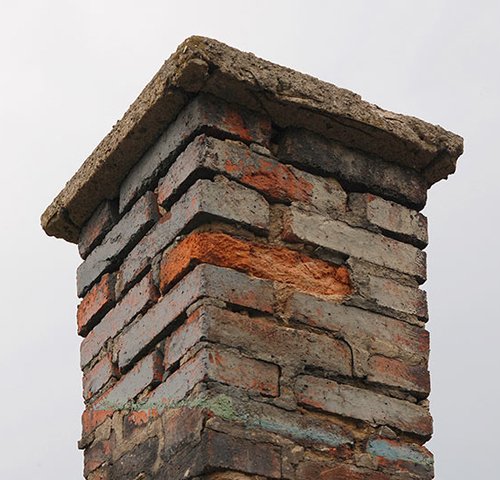Why Timely Chimney Mortar Repair Protects Your Home from Bigger Issues
Key Takeaways
- Damaged chimney mortar can lead to water infiltration, structural instability, and fire hazards.
- Spotting signs like crumbling joints, moisture stains, and loose bricks can help you act early.
- Professional mortar repair, including tuckpointing, restores both function and appearance.
- Regular inspections and timely maintenance can prevent costly chimney rebuilds.
What Chimney Mortar Really Does for Your Home
Chimney mortar might not be the most noticeable part of your home, but it plays a vital role in protecting your structure. Mortar is the substance that binds chimney bricks or stones together, creating a solid, weatherproof stack. Over time, harsh weather, temperature fluctuations, and moisture can erode the mortar, leading to gaps that compromise the chimney’s integrity.
When these joints begin to fail, your chimney becomes vulnerable to serious damage. Rainwater can seep through the gaps, freeze during winter, and widen the cracks. Left unaddressed, this can weaken the entire chimney and allow moisture to spread into your home’s interior walls, attic, or fireplace.
Common Signs Your Chimney Mortar Needs Repair
Spotting mortar issues early can prevent major structural damage and costly repairs down the line. Here are some common signs to look for:
- Crumbling or missing mortar between bricks or stones
- Visible cracks in the mortar joints
- Water stains or damp spots on interior walls or ceilings near the chimney
- Efflorescence, or white powdery residue on the bricks, which indicates water movement
- Loose or shifting bricks, a serious safety concern if not stabilized quickly
These signs are your chimney’s way of alerting you to trouble. The longer mortar damage goes untreated, the more likely it is that the chimney’s structural stability will deteriorate.
Understanding the Process of Chimney Mortar Repair
Repairing chimney mortar is not a cosmetic fix. It’s a precise and essential process that reinforces your chimney’s structure. The most common method is tuckpointing, which involves removing damaged mortar and replacing it with fresh mortar that matches the original in strength and color.
A skilled mason will:
- Use specialized tools to remove deteriorated mortar without damaging the surrounding bricks.
- Prepare the joints and insert new mortar carefully to restore strength.
- Compact and shape the mortar to match the chimney’s original look.
This process seals the chimney against water intrusion and improves its overall appearance. In historic homes, proper tuckpointing preserves the original architecture while extending the life of the chimney by decades.
Why Professional Mortar Repair Is Worth It
Some homeowners consider DIY repairs using generic mortar mix or caulk. While this might seem like a quick fix, it rarely addresses the root of the problem. Mortar joints need to be repaired with materials that match the original composition. Using the wrong type of mortar can cause additional stress on the bricks, leading to faster deterioration.
Professional masons are trained to assess damage and apply the right repair techniques. They also have access to tools and materials designed for lasting results. This is particularly important in regions with freeze-thaw cycles or heavy rainfall, where improper repairs can fail within a year.
More importantly, local building codes may require repairs to be performed to specific standards. Inaccurate DIY work may not only lead to structural problems but could violate safety regulations.
How Weather Impacts Chimney Mortar Lifespan
Weather is one of the leading causes of mortar failure. In areas with cold winters, moisture trapped inside chimney joints can freeze and expand, weakening the mortar. In humid climates, constant exposure to rain can slowly erode mortar even without freezing temperatures.
Chimneys exposed to direct sunlight on one side may expand and contract unevenly throughout the day. This movement causes tiny fractures in the mortar over time. Even wind and pollution can have a long-term effect, particularly in older urban environments.
For these reasons, the Chimney Safety Institute of America (CSIA) recommends annual chimney inspections to identify vulnerabilities before they turn into structural damage. You can explore more on their guidelines here.
The Role of Mortar Repair in Preventing Interior Water Damage
Water is a chimney’s worst enemy. Once it enters through compromised mortar joints, it doesn’t stop at the chimney. It can travel into attic beams, insulation, and drywall. Many homeowners discover chimney mortar issues only after spotting yellowed ceilings or mold near fireplaces.
Proper mortar repair keeps moisture out. It ensures the chimney remains a sealed structure, channeling smoke and gases safely upward while keeping external elements out. Combined with a functional chimney crown and flashing, repaired mortar is a crucial part of your home’s weather barrier.
Long-Term Benefits of Proactive Mortar Maintenance
Mortar repair isn’t just a reaction to visible damage. It’s a proactive way to extend your chimney’s life. Regularly scheduled inspections followed by minor repairs can prevent the need for a full chimney rebuild—a project that can easily cost thousands of dollars.
Here are some long-term benefits:
- Improved fire safety, as cracked mortar can allow heat and flames to reach combustible areas.
- Better energy efficiency, because sealed joints prevent drafts and water leaks.
- Increased home value, as a well-maintained chimney is a sign of a cared-for property.
- Peace of mind, knowing you’ve protected one of your home’s most important features.
What to Do When You Suspect Mortar Deterioration
If you notice any signs of mortar damage, it’s best to contact a certified chimney specialist. They can evaluate the extent of the deterioration and recommend the appropriate course of action. Early intervention is the best defense against long-term damage.
Chimney professionals may recommend not just tuckpointing but also waterproofing treatments, chimney cap replacements, or flashing repair if the damage is widespread. Having a trusted local expert helps you prioritize repairs without overextending your budget.
How to Protect Your Chimney Between Repairs
Keeping your chimney in good condition doesn’t end with a repair job. Between professional inspections, there are steps you can take to maintain your chimney:
- Keep tree branches trimmed to avoid debris buildup.
- Monitor your attic and ceilings for signs of leaks.
- Install a chimney cap to prevent rainwater and animals from entering.
- Avoid using high-pressure hoses or harsh chemicals when cleaning the chimney exterior.
These simple steps, when paired with professional maintenance, can keep your chimney mortar strong for years to come.
Investing in Your Home’s Safety and Structure
Chimney mortar repair may not be the first thing on your home maintenance checklist, but it deserves your attention. Ignoring early signs of damage can lead to bigger, more expensive problems later. Whether you’re maintaining an older home or caring for a newer structure, mortar upkeep is a smart investment in the safety, value, and longevity of your property.

